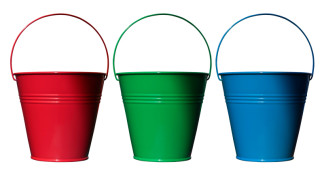 If you have a simple customer database or point-of-sale payments system or email marketing list or appointment scheduling software or full-on customer relationship management (CRM) system or any other way you collect customer data (not including the fishbowl on the counter with the business cards)—then you are on your way to “segmenting” your customer list.
If you have a simple customer database or point-of-sale payments system or email marketing list or appointment scheduling software or full-on customer relationship management (CRM) system or any other way you collect customer data (not including the fishbowl on the counter with the business cards)—then you are on your way to “segmenting” your customer list.
Segmentation = marketing speak for grouping customers for purposes of…
- Targeted messages or offers. A study by marketing software company Marketo found that list segmentation was by far the biggest success factor in email campaigns.
- Identifying high value customers—big spenders, frequent visitors, “net promoters” who refer new business.
- Gaining fresh insights into customer behavior and needs, including where to prospect for leads and how to improve products.
CRM systems feature pre-set categories and customizable tags for segmenting your customers. Some typical segments are…
Demographics
Basic but potentially very useful buckets, for instance for age groups (maybe the elderly or young families will turn out to be your best customers) or by home address (such as within a short drive from your location).
Customer Value
If Customer A reliably pays full ticket, Customer B only shops for discounts and Customer C is forever kicking the tires, then A may be your best target, assuming the cost of selling and servicing isn’t too high. Here’s a good rundown from MarketingZone about what makes a high value customer.
Stage of the Buying Cycle
Starting with new leads, hot leads (or cold leads) and moving through the sale and onboarding to retention, tagging customers through the buying cycle determines the messaging and the level of contact at each stage.
“Personas” or “Psychographic” Segmentation
Marketers may base segments on detailed profiles of imaginary customers (“Lauren is a 34-year-old, over-scheduled mother of two toddlers, with a household income of $85,000, who hasn’t had a vacation in 5 years…”) as a way of getting inside the heads of customers to figure out what marketing messages will work best.
Now for Some Cautions from the Man Who Invented Modern Market Segmentation
Social scientist Daniel Yankelovich, who pioneered the idea in the 1960s that segmenting could be more sophisticated than simple demographic information, wrote an article in 2006 saying that segmentation (as practiced by big companies) has largely flopped because marketers over-think it. Delving into the minds of personas makes sense for life changing purchase decisions (like medical care or retirement), he says, otherwise it’s all about price or behavior (for instance, people who like do-it-yourself vs. do-it-for-me). If you scroll down to near the bottom of the article, you’ll see his chart relating segmenting to the “gravity of decision.”
Yankelovich’s advice is to keep it simple and flexible: “Effective segmentations focus on just one or two issues, and they need to be redrawn as soon as they have lost their relevance.”
And remember that small, local businesses have a big advantage in marketing: They actually know their customers and can reach out to them personally. And personal beats personas any time.




